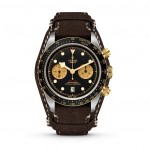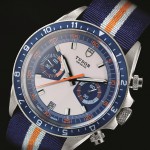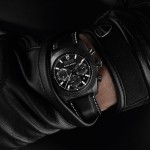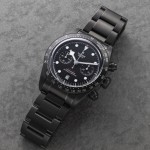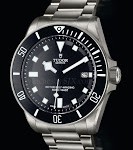Three Reasons The Tudor Fastrider Chrono Is Worth A Look
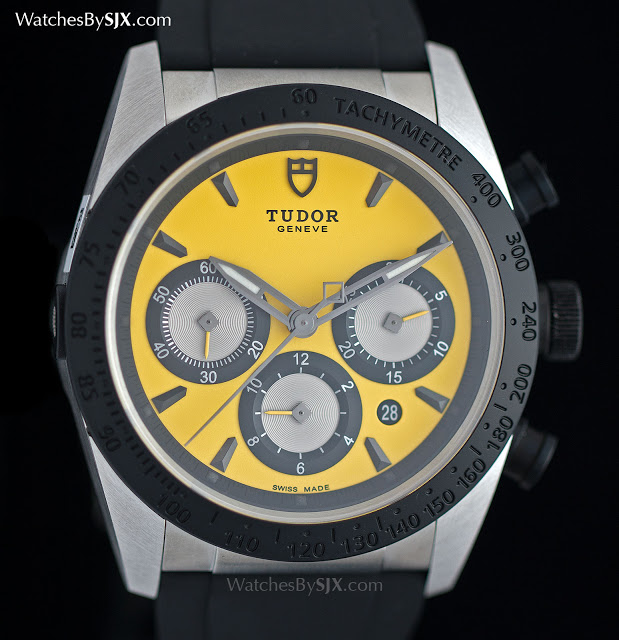
Introduced earlier this year at Baselworld 2015, the Tudor Fastrider Chrono is another entrant into a crowded segment, the mid-range sports chronograph. The formula is generic, but as the cliche goes, the devil is in the details.

Born of Tudor‘s partnership with Ducati, the Fastrider Chrono is a large, sporty chronograph available in similarly sporty colours. There are plenty of other watches on the market that have been conceived along these lines. What distinguishes the Fastrider is its case (in particularly the case) and dial construction, which are both very good for this price range.
Sintered ceramic bezel
Scratch resistant black ceramic is used for the bezel, while the crown and pushers are black PVD coated to match. The bezel is matte, smooth, with rounded edges, even round the recessed tachymeter lettering. That means the bezel was probably produced by sintering, a technique that’s akin to baking with a mould that produces a dense and hard component.
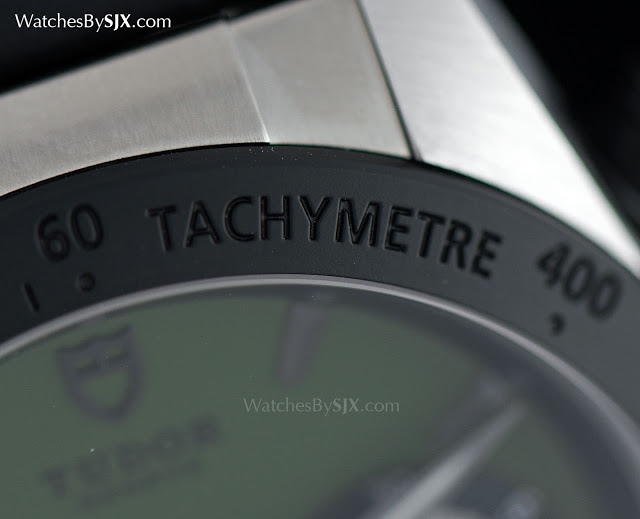
A carefully finished case Water resistant to 150m, the steel case is 42mm in diameter, not overly large but still chunky with a hint of the Rolex Oyster case that Tudor once used; the fluted case back is identical to the Rolex Oyster back. The quality of the steel case is evident in the finishing – even and finely grained brushing throughout – especially on the ends of the lugs. That being said, the absence of a wide polished bevel like that found on the case of the Heritage Chrono is regrettable since it adds a touch of refinement to the case.
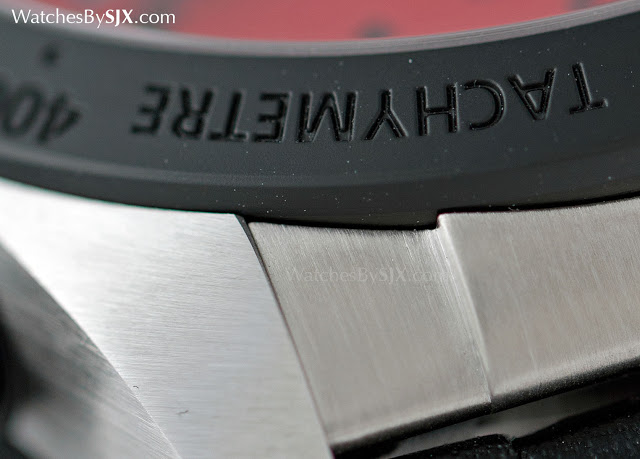
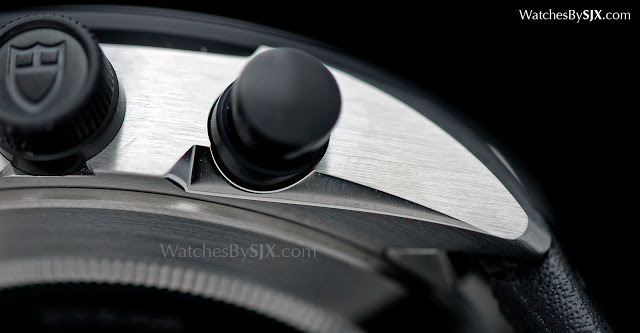
Another detail worth nothing are the recesses running along the length of the case. Found on both sides of the case, these tapered recesses are neatly milled out and mirror-polished.
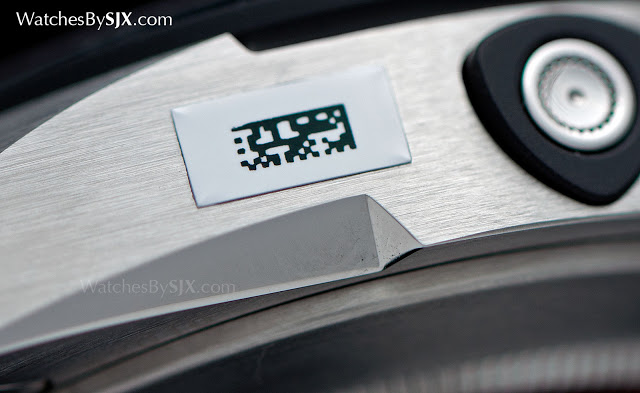
Dial with proper detail And the dial equally withstands scrutiny up close. Available in olive green, red or yellow, the dial has a matte finish with facetted, arrowhead markers that catch the light, instead of plain, flat markers typical of more affordable watches. The hands are similarly facetted. Admittedly the printing of the numerals and text is not as dense up close (visible in the “28” of the date below), but it still passes muster on the wrist.
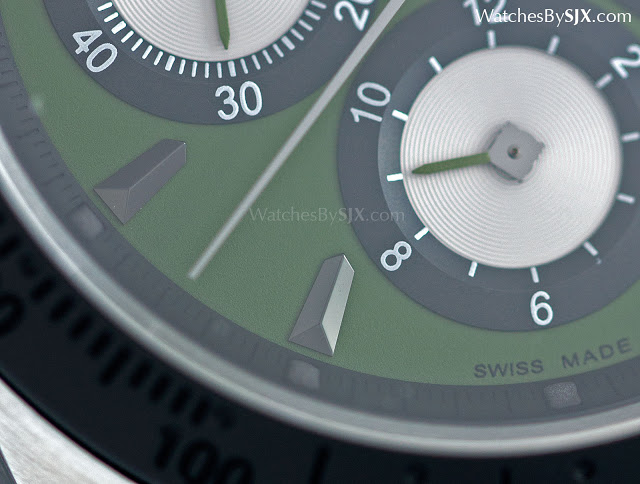
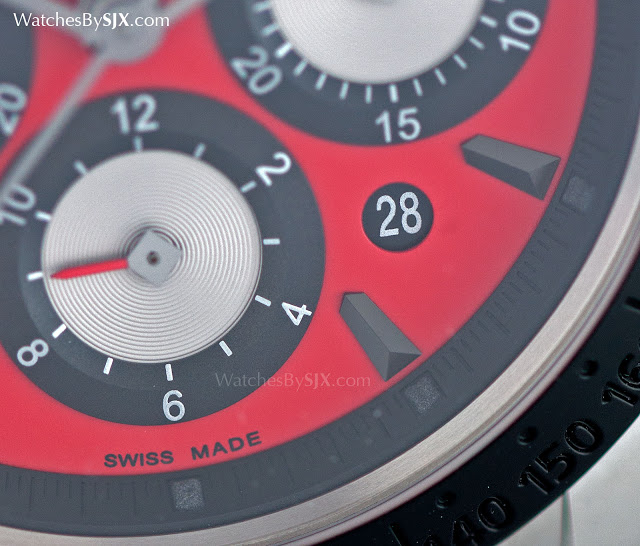
An unusual detail is the diamond-shaped counterweight on the central seconds hand which is echoed in each of the hands of the sub-dials.
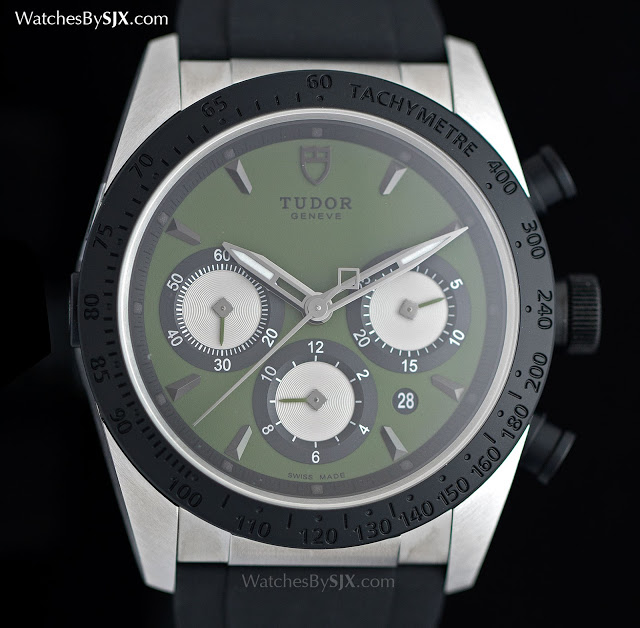
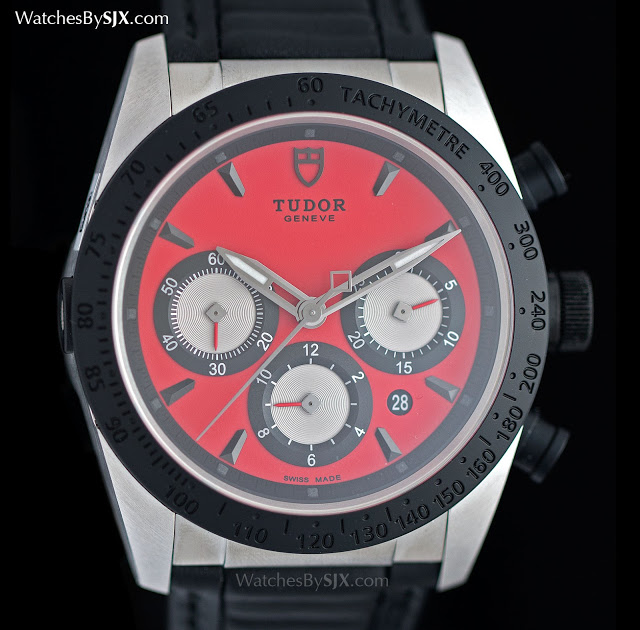
Competition and pricing Compared with the competition, the Longines Heritage Diver 1967 for instance, the Fastrider has visibly superior case construction. Given Tudor is the sister brand of Rolex, which boasts some of the best case making facilities in the whole of Switzerland, that is no surprise. However, the movement inside is pedestrian. Most of the competition from Swatch Group brands like Longines and Hamilton offer more sophisticated movements, given their parent company’s ownership of ETA, the largest movement maker in Switzerland. The Longines mono-pusher chronograph movement is a good example of a heavily upgraded Valjoux. That is not to say the Tudor uses an inferior movement. It’s power by a calibre derived from the robust and reliable Valjoux 7750. But because the minutes counter has been moved to three o’clock (instead of the usual 12 o’clock for the 7750), the date mechanism has to be rejigged. That means the date has to be set via the pusher in the case at nine o’clock, instead of using the crown as is convention. It’s a minor convenience but found on most entry level chronographs with this tri-compax dial layout, since all of them use the same movement. On the wrist, however, it’s the case and dial that provide visual appeal. And on this count the Tudor scores well. The Fastrider Chrono retails for SFr3900 or S$5460. That’s equivalent to about US$4000.

